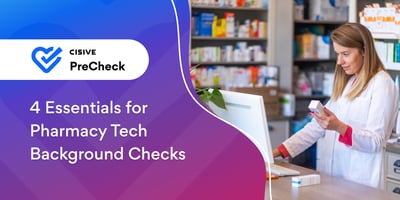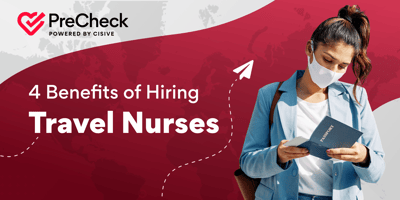

Every time you hire a pharmacy technician, you’re entrusting them with your patients, compliance...

New nurse onboarding goes far beyond paperwork and facility tours. When you bring in RNs fresh from school, those first few weeks set the tone for the rest of their work life with you.
With nurse burnout continuing to rise, effective new nurse onboarding plays a critical role more than ever. Studies cited by the American Nursing Association have said that 62% of nurses, and up to 69% of nurses under 25, suffer from burnout. To prevent burnout, you need onboarding that builds clinical readiness and emotional resilience.
Orientation should offer more than an introduction to charting systems and badge access. It should prepare nurses for the pace of the floor, the unit culture, and the clinical expectations for your practice.
Key TakeawaysHere are the key things you need to know about new nurse onboarding:
|
Table of Contents
For healthcare HR leaders, onboarding is more than an administrative task. It’s a critical moment that impacts patient safety, nurse retention, and long-term performance. With 62% of nurses and 69% of those under 25 reporting burnout (ANA), your onboarding process must support both clinical readiness and emotional resilience.
When done well, onboarding accelerates time-to-productivity, strengthens team culture, and reduces costly early turnover.
Burnout is now a leading cause of nurse turnover. A JAMA Network Open study found that 31.5% of nurses who left their roles identified burnout as the primary reason (JAMA). Early-career nurses are especially vulnerable—17.5% leave their first job within a year (NYU).
A structured, staged onboarding experience can reduce that risk—ensuring nurses feel prepared, supported, and aligned with your organization.
New nurses face unique pressures as they transition from school to practice:
Onboarding is the one moment HR controls that can directly address each of these issues.

Onboarding newly hired nurses works best when it runs like a well-managed care plan — organized, measurable, and responsive. Nurses entering your system need structure and clarity, and they need to learn tools for the pace and pressure of the clinical floor. These best practices bring consistency, build trust, and help prevent burnout.
Design onboarding like a care plan: assess, train, validate. Define timelines for EMR training, shadow shifts, and early patient assignments. Nurses thrive when they know what to expect and when.
Inconsistent preceptor styles create confusion. Use shared rubrics, expectations, and orientation binders to ensure alignment across departments.
Equip nurse graduates with a pocket reference covering lab ranges, escalation protocols, paging formats, and code cart contents. This cuts down on guesswork in high-pressure situations.
Use LMS or onboarding platforms to track clinical milestones and credential completion. Visibility into progress helps HR and nurse leaders intervene early when needed.
Schedule formal check-ins at key points (week 1, week 3, day 90). These sessions allow preceptors to assess readiness, address burnout risks, and affirm progress.
Each skipped step becomes a downstream safety issue. Let nurses learn the protocols, tools, and unit dynamics at a sustainable pace.
Start credential and background verification before orientation. With PreCheck, you can validate licensure, education, work history, and immunization status early—ensuring nurses start fully cleared and on schedule.
When screening or credentialing is delayed, onboarding stalls—and HR feels the pressure. Cisive PreCheck’s healthcare-specific platform reduces friction by consolidating education checks, license verification, sanction screening, and immunization tracking into one seamless process.
That means less paperwork, fewer bottlenecks, and faster floor readiness.
Healthcare professionals in HR know: onboarding isn’t just onboarding, it’s a strategic investment in workforce stability. With PreCheck, you gain control, speed, and accuracy where it matters most: at the start of every registered nurse’s journey.
Let’s reduce turnover and improve time-to-readiness. Schedule a PreCheck demo today.

Every time you hire a pharmacy technician, you’re entrusting them with your patients, compliance...
.jpg?height=200&name=BLOG_%20Nursing%20Background%20Check%20Requirements_%20What%20You%20Need%20to%20Know%20(Refreshed).jpg)
Ensuring quality patient care requires you to maintain knowledge of and compliance with your...

Travel nurses provide much-needed flexibility and expertise to healthcare teams. However, the...